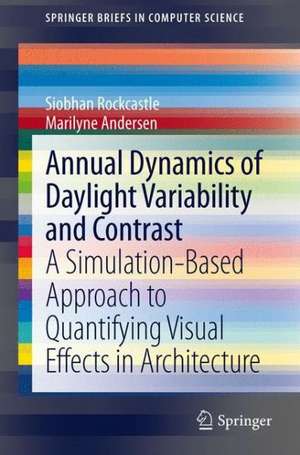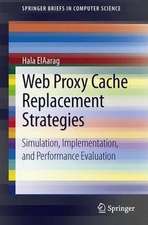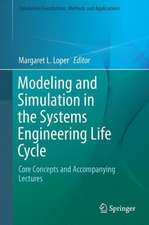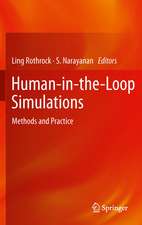Annual Dynamics of Daylight Variability and Contrast: A Simulation-Based Approach to Quantifying Visual Effects in Architecture: SpringerBriefs in Computer Science
Autor Siobhan Rockcastle, Marilyne Andersenen Limba Engleză Paperback – 9 iul 2013
Din seria SpringerBriefs in Computer Science
-
 Preț: 475.83 lei
Preț: 475.83 lei - 20%
 Preț: 166.97 lei
Preț: 166.97 lei - 20%
 Preț: 325.63 lei
Preț: 325.63 lei - 20%
 Preț: 349.15 lei
Preț: 349.15 lei - 20%
 Preț: 302.49 lei
Preț: 302.49 lei -
 Preț: 381.81 lei
Preț: 381.81 lei -
 Preț: 446.47 lei
Preț: 446.47 lei - 20%
 Preț: 296.17 lei
Preț: 296.17 lei - 20%
 Preț: 335.66 lei
Preț: 335.66 lei - 20%
 Preț: 463.83 lei
Preț: 463.83 lei - 20%
 Preț: 323.00 lei
Preț: 323.00 lei - 20%
 Preț: 322.35 lei
Preț: 322.35 lei - 20%
 Preț: 321.85 lei
Preț: 321.85 lei - 20%
 Preț: 232.68 lei
Preț: 232.68 lei -
 Preț: 375.45 lei
Preț: 375.45 lei - 20%
 Preț: 323.00 lei
Preț: 323.00 lei - 20%
 Preț: 322.81 lei
Preț: 322.81 lei - 20%
 Preț: 324.17 lei
Preț: 324.17 lei - 20%
 Preț: 323.00 lei
Preț: 323.00 lei - 20%
 Preț: 322.17 lei
Preț: 322.17 lei - 20%
 Preț: 322.50 lei
Preț: 322.50 lei - 20%
 Preț: 323.34 lei
Preț: 323.34 lei - 20%
 Preț: 324.17 lei
Preț: 324.17 lei - 20%
 Preț: 323.46 lei
Preț: 323.46 lei - 20%
 Preț: 322.17 lei
Preț: 322.17 lei - 20%
 Preț: 322.02 lei
Preț: 322.02 lei -
 Preț: 341.50 lei
Preț: 341.50 lei - 20%
 Preț: 324.49 lei
Preț: 324.49 lei -
 Preț: 344.47 lei
Preț: 344.47 lei -
 Preț: 376.80 lei
Preț: 376.80 lei -
 Preț: 377.18 lei
Preț: 377.18 lei - 20%
 Preț: 324.17 lei
Preț: 324.17 lei - 20%
 Preț: 352.26 lei
Preț: 352.26 lei - 20%
 Preț: 321.32 lei
Preț: 321.32 lei - 20%
 Preț: 322.17 lei
Preț: 322.17 lei - 20%
 Preț: 324.17 lei
Preț: 324.17 lei - 20%
 Preț: 322.02 lei
Preț: 322.02 lei -
 Preț: 374.46 lei
Preț: 374.46 lei - 20%
 Preț: 320.21 lei
Preț: 320.21 lei - 20%
 Preț: 323.34 lei
Preț: 323.34 lei - 20%
 Preț: 324.17 lei
Preț: 324.17 lei - 20%
 Preț: 231.84 lei
Preț: 231.84 lei - 20%
 Preț: 294.97 lei
Preț: 294.97 lei - 20%
 Preț: 322.50 lei
Preț: 322.50 lei - 20%
 Preț: 323.46 lei
Preț: 323.46 lei -
 Preț: 374.08 lei
Preț: 374.08 lei -
 Preț: 408.23 lei
Preț: 408.23 lei - 20%
 Preț: 321.52 lei
Preț: 321.52 lei - 20%
 Preț: 323.34 lei
Preț: 323.34 lei - 20%
 Preț: 323.00 lei
Preț: 323.00 lei
Preț: 323.80 lei
Preț vechi: 404.74 lei
-20% Nou
Puncte Express: 486
Preț estimativ în valută:
61.98€ • 67.35$ • 52.10£
61.98€ • 67.35$ • 52.10£
Carte tipărită la comandă
Livrare economică 21 aprilie-05 mai
Preluare comenzi: 021 569.72.76
Specificații
ISBN-13: 9781447152323
ISBN-10: 1447152328
Pagini: 96
Ilustrații: X, 83 p. 84 illus., 27 illus. in color.
Dimensiuni: 155 x 235 x 5 mm
Greutate: 0.18 kg
Ediția:2013
Editura: SPRINGER LONDON
Colecția Springer
Seria SpringerBriefs in Computer Science
Locul publicării:London, United Kingdom
ISBN-10: 1447152328
Pagini: 96
Ilustrații: X, 83 p. 84 illus., 27 illus. in color.
Dimensiuni: 155 x 235 x 5 mm
Greutate: 0.18 kg
Ediția:2013
Editura: SPRINGER LONDON
Colecția Springer
Seria SpringerBriefs in Computer Science
Locul publicării:London, United Kingdom
Public țintă
ResearchCuprins
Introduction.- Research Context.- Architectural Context.- Defining New Metrics for Contrast and Variability.- Application of Metrics to Abstract Spatial Models.- Application of Metrics to Detailed Case Studies.- Conclusion.
Textul de pe ultima copertă
Daylight is a dynamic source of illumination in architectural space, creating diverse and ephemeral configurations of light and shadow within the built environment. Perceptual qualities of daylight, such as contrast and temporal variability, are essential to our understanding of both material and visual effects in architecture.
Under the rapidly growing context of energy conscious research, there is a need to re-balance our definition of “performance” to include those perceptual and aesthetic aspects of light that are often disregarded by the world of simulation. Contrast is important to the definition of space and it is essential in understanding how architecture is enhanced and transformed over time by the dynamic and variable characteristics of daylight. Although there are a growing number of studies that seek to define the relationship between brightness, contrast, and lighting quality, the dynamic role of daylight within the visual field is underrepresented by existing metrics. Although spatial contrast and light variability are fundamental to the visual experience of architecture, architects still rely primarily on intuition and experience to evaluate their designs because there are few, if any, metrics that address these factors.
New metrics that addresses this challenge could help designers to contextualize the relative strength and temporal stability of contrast within a given architectural space, which would open up a new dimension in architectural performance. Through an analysis of contemporary architecture from around the world, the authors have developed a new typological language that categorizes architectural space in terms of contrast and temporal variation. This research proposes a new family of metrics that quantify the magnitude of contrast-based visual effects and time-based variation within daylit space through the use of time-segmented daylightrenderings to provide a more holistic analysis of daylight performance.
Under the rapidly growing context of energy conscious research, there is a need to re-balance our definition of “performance” to include those perceptual and aesthetic aspects of light that are often disregarded by the world of simulation. Contrast is important to the definition of space and it is essential in understanding how architecture is enhanced and transformed over time by the dynamic and variable characteristics of daylight. Although there are a growing number of studies that seek to define the relationship between brightness, contrast, and lighting quality, the dynamic role of daylight within the visual field is underrepresented by existing metrics. Although spatial contrast and light variability are fundamental to the visual experience of architecture, architects still rely primarily on intuition and experience to evaluate their designs because there are few, if any, metrics that address these factors.
New metrics that addresses this challenge could help designers to contextualize the relative strength and temporal stability of contrast within a given architectural space, which would open up a new dimension in architectural performance. Through an analysis of contemporary architecture from around the world, the authors have developed a new typological language that categorizes architectural space in terms of contrast and temporal variation. This research proposes a new family of metrics that quantify the magnitude of contrast-based visual effects and time-based variation within daylit space through the use of time-segmented daylightrenderings to provide a more holistic analysis of daylight performance.
Caracteristici
Introduces a new typological language that categorizes architectural space in terms of contrast and temporal variation Proposes a new family of metrics that quantify the magnitude of contrast-based visual effects and time-based variation within daylit spaces Demonstrates how, through the use of time-segmented daylight renderings, a more holistic analysis of daylight performance is made possible Includes supplementary material: sn.pub/extras









